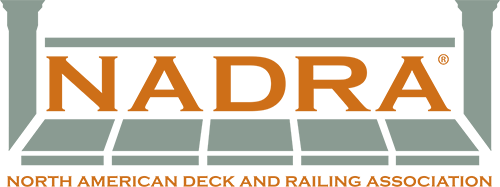June 14, 2010 | With temperatures topping the 80s, chances are you’ve already been relaxing on your deck. Or maybe adding a deck is high on your summer agenda.
As many as 3 million homeowners add decks to their homes each year, according to the North American Deck and Railing Association. Municipalities require permits for new deck construction, but not all contractors or homeowners file the appropriate paperwork, so many decks aren’t inspected or even built safely.
Since 1999, there have been more than 850 reported injuries and at least 20 deaths as a result of deck failures, NADRA reports.
Phil Klonowski, owner of Custom Decks by Klassic in Macedonia, advises homeowners to require the contractor show proof of being a certified installer of the product they are using. Custom Decks by Klassics builds traditional wood decks and TimberTech decks made of about 50 percent wood and 50 percent PVC, a blend that has been around for about 15 years, Klonowski says.
The industry is building more with composite decking. Among the advantages: The combined materials don’t look or feel much different than wood and have a smooth embossed finish. There’s less worry about splinters or about kids putting loose wood into their mouths. And composite decks require less maintenance than all-wood structures.
But there’s also a disadvantage:
“A deck made of composite is about double the price of a wood deck the same size,” Klonowski says. “Their selling point is that you don’t have to do the annual staining.”
No matter the material, the North American Deck and Railing Association offers a safety checklist. Tips also are from service providers who belong to Angie’s List, which compiles consumer-recommended businesses:
• Inspections: If you’re buying a home with a deck, ask your home inspector for a thorough inspection. If you have a deck, annual inspections are your best bet to ensure that it’s structurally sound.
• Split or decaying wood: Check several areas of the deck to be sure the wood is still sound. This includes the ledger board (where the deck attaches to the house and a common source of deck failure), support posts and joists under the deck (if you can reach them), deck boards, railings and stairs.
Pay special attention to any areas that tend to remain damp, are regularly exposed to water or are in contact with fasteners. Use a tool such as an ice pick or screwdriver to penetrate the wood surface. If you can easily penetrate one-fourth to one-half inch, break off a sliver of wood without splinters, or the wood is soft and spongy, decay may be present. If your deck coating has worn away, clean and waterproof it again to prevent decay.
Look for small holes in the wood, which may indicate insects.
• Flashing: This is a metal or plastic guard that directs water out and away from sensitive areas. It’s often installed where the deck and house come together, keeping moisture and debris from collecting between the house and the deck’s ledger board. Be certain the flashing is sound and firmly in place. Consider adding or replacing flashing if you notice areas that are obviously allowing water to collect.
• Loose or corroded fasteners: Fasteners include nails, screws or anchors in the ledger board. Tighten any loose fasteners, and pound in any nails. (Note: The ledger should not be fastened with only nails.)
If a fastener appears rusted or corroded, consider replacing it. A corroded fastener can cause deterioration in surrounding wood.
The deck or stairs should appear even without sagging and should not sway or move when tested.
• Railings and banisters: These should be secure to be sure there is no give.
Also, check to be sure they are high enough (most codes require a 36-inch-high railing and usually encourage 42-inch-high railings) with rails no more than 4 inches apart (measured from the inside of the rails) to keep small children and pets from squeezing through. This is more important the higher your desk is off the ground.
• Stairs: Check any railings or handrails to be sure they are firmly held in place. Also ensure that risers and stringers are securely attached and not decayed.
If the area behind the stair treads is open, this opening should be no more than 4 inches high. Always keep stair pathways clear of planters, decor, toys and other items that can be tripping hazards.
• Cleaning and maintenance: Clean away any leaves and debris, since these can be slippery and promote mildew. If mildew is present or the deck coating has worn away, clean and apply a new waterproof coating. It can help prevent split, decayed wood and loosened fasteners.
• Grills, fire pits, chimneys, heaters and candles: These features create a warm and cozy atmosphere, but make sure any source of fire or heat is safely placed away from flammable surfaces, or that the deck surface is protected by a nonflammable pad. Always use caution and manufacturers’ directions.
• Lighting and electrical: Be sure all lighting is working. Clean light covers to allow maximum light, and trim plants or tree limbs that may be blocking the light.
Be sure all electrical outlets, appliances and features are up to code, in good condition, and childproof if children are present. Watch that any electrical cords do not present a tripping hazard.
• Outdoor furniture and storage: Test all outdoor furniture to be sure it is sturdy. Don’t place seating close to the edge of a deck. If you have a swing or hammock installed, test the chains and ropes to be sure they are secure. Consider installing childproof latches on any storage boxes and benches.
Be sure to keep all deck-related chemical products stored safely away from children, including BBQ lighter fluids, matches, cleaner, etc.
• Surrounding trees: If you have trees overhanging your deck, make certain there is no danger of decaying limbs breaking free and falling on the deck.

